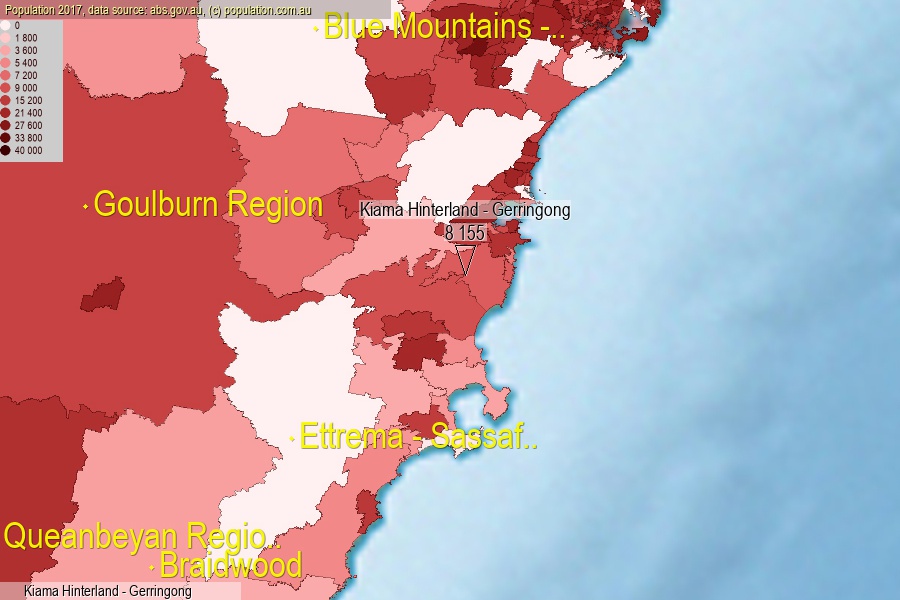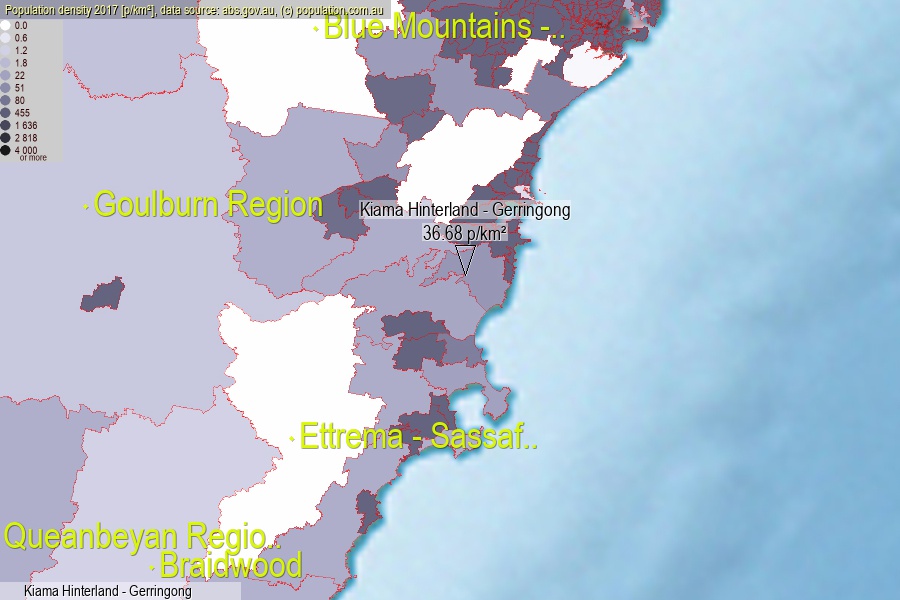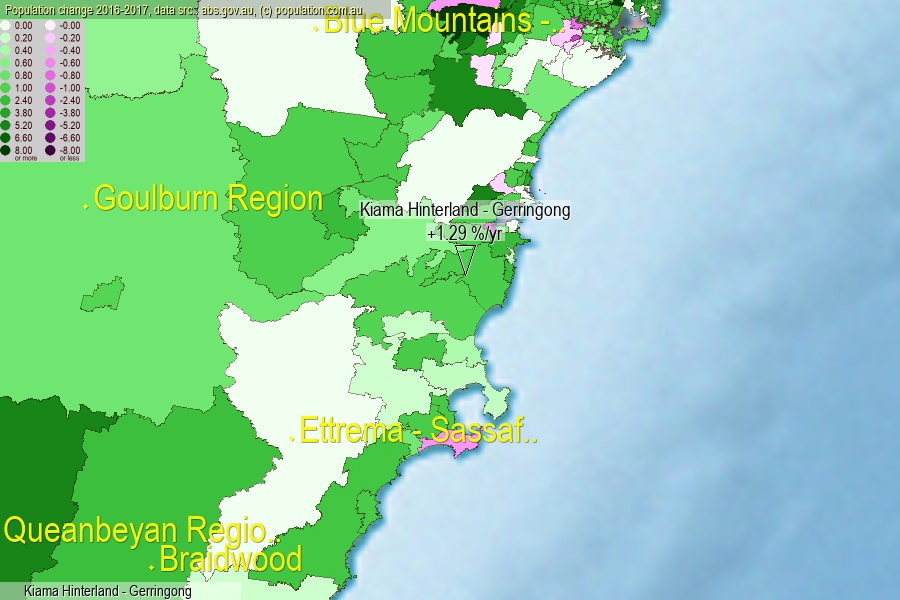 population.com.au
population.com.auLast official estimated population of Kiama Hinterland - Gerringong (as Statistical Area Level 2) was 8 155 people (on 2017-06-30)[2]. This was 0.03% of total Australian population and 0.103% of NSW population. Area of Kiama Hinterland - Gerringong is 222.30 km², in this year population density was 36.68 p/km² . If population growth rate would be same as in period 2016-2017 (+1.29%/yr), Kiama Hinterland - Gerringong population in 2025 would be 9 037. [0]



Click to enlarge. Kiama Hinterland - Gerringong is located in the center of the images.
Population [people], population density [p./km²] and population change [%/year] [2]
View borders » (new window) [4]
[1991-1992] +3.36 %/Yr.
[1992-1993] +2.59 %/Yr.
[1993-1994] +2.44 %/Yr.
[1994-1995] +2.68 %/Yr.
[1995-1996] +2.57 %/Yr.
[1996-1997] +2.61 %/Yr.
[1997-1998] +1.68 %/Yr.
[1998-1999] +3.84 %/Yr.
[1999-2000] +0.66 %/Yr.
[2000-2001] +2.25 %/Yr.
[2001-2002] +0.22 %/Yr.
[2002-2003] +0.62 %/Yr.
[2003-2004] -0.49 %/Yr.
[2004-2005] +0.27 %/Yr.
[2005-2006] +0.50 %/Yr.
[2006-2007] +1.65 %/Yr.
[2007-2008] +0.85 %/Yr.
[2008-2009] +1.19 %/Yr.
[2009-2010] +1.94 %/Yr.
[2010-2011] +1.82 %/Yr.
[2011-2012] +1.71 %/Yr.
[2012-2013] +2.06 %/Yr.
[2013-2014] +2.44 %/Yr.
[2014-2015] +1.97 %/Yr.
[2015-2016] +1.53 %/Yr.
[2016-2017] +1.29 %/Yr.
[0] Calculated with linear interpolation from officially estimated population
[1] Read more about SA2 and Australian Statistical Geography Standard (ASGS) on abs.gov.au
[2] Population data from Australian Bureau of Statistics (Population and density: 2017; change: 2016-2017)
[3] Digital Boundaries: Australian Statistical Geography Standard (ASGS) 2016.
[4] Border coordinates are simplifyed using Ramer-Douglas-Peucker algorithm.